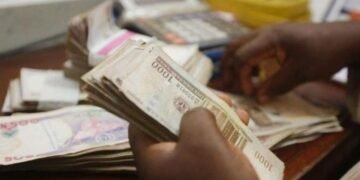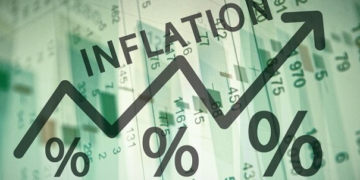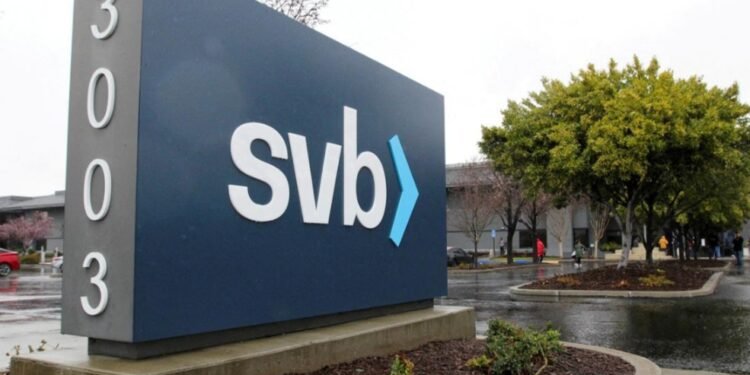The USA regulators on Friday closed troubled Silicon Valley Bank after deposit outflows and a failed capital raise plunged the country’s 16th largest bank into crisis.
The bank, founded in 1983 by Bill Biggerstaff and Robert Medearis over a poker game had $209 billion in assets and $175.4 billion in deposits.
This is the second largest bank failure in U.S. history and the first bank to fail since 2020. It also became the largest bank to fail since Seattle’s Washington Mutual during the height of the 2008 financial crisis and, behind Washington Mutual.
Reacting to the development on Friday, the US Treasury Secretary, Janet Yellen said there are “a few” banks the department is closely watching.
“There are recent developments that concern a few banks that I’m monitoring very carefully and when banks experience financial Iloss it is and should be a matter of concern,” Yellen told lawmakers Friday.
California state regulators seized control of the troubled bank on Friday and appointed the Federal Deposit Insurance Corporation as receiver. This means that the FDIC will be able to sell off assets and return money to insured depositors.
Roughly 87% of Silicon Valley Bank’s deposits were uninsured as of December 2022, according to its annual report.
The FDIC, which serves as a backstop for deposits at U.S. banks up to a limit of $250,000, said all insured
depositors would have access to their funds “no later” than Monday morning.
SVB crisis as written by Yahoo Finance:
The recent problems at SVB started with the Fed’s campaign to bring down inflation, which pinched many of its startup and tech clients. An outflow of deposits forced it to sell assets, bonds, at a loss.
Banks are big investors in bonds because they need lots of safe places to park their cash. Many of the biggest financial institutions in the country piled into these investments during a period of historically-low interest rates that spanned the early years of the pandemic, as banks took in tons of new deposits and lending was somewhat restrained.
But now the Fed is hiking rates at a rapid clip, with Fed Chai Jerome Powell warning earlier this week that the central bank may have to speed up the increases to cool the economy further. The problem that creates for banks is simple: Higher rates lower the value of their existing bonds.
Across all U.S. banks, unrealized losses on available-for-sale and held-to-maturity securities totaled $620 billion at the end of 2022, according to the Federal Deposit Insurance Corp. FDIC Chair Martin Gruenberg highlighted this risk during a speech on March 6 to an international banking conference.
Banks don’t have to realize these losses if they don’t sell the assets. But SVB Financial didn’t have that choice. Deposit outflows forced their hand. On Thursday, the stock fell 60% on concerns about the bank’s disclosure of a $1.8 billion loss from the sale of bonds and plans to raise $2.25 billion by selling common and preferred stock.
“This is the most aggressive Fed rate hiking cycle since the 80’s. When you have rates rising so quickly inevitably some thing will break,” Seema Shah, chief global strategist at Principal Asset Management, told Yahoo Finance.
“There’s always going to be some banks in the US which are weaker, but broadly, the U.S. banking industry is fairly well capítalized. So we’re not looking at you know, a major financial system collapse by any means at all, Shah added.
Several analysts said Friday they don’t anticipate SVB Financial’s challenges will eripple other regional banks.
Morgan Stanley, in a note, said “the funding pressures facing SIVB are highly idiosyncratic and should not be viewed as a read-across to other regional banks”
“We do not believe there is a liquidity crunch facing the banking industry, and most banks in our coverage have
ample access to liquidity,” the bank said.
Bank of America analysts said in a Friday note that “we believe that the sharp sell-off in bank stocks” Thursday was likely overdone as investors extrapolated idiosyncratic issues at individual banks to the broader banking sector”
Nevertheless, rising rates are a challenge for all banks, Bank of America analysts noted. They will affect net interest margins, a key measure of profitability for banks, and will harm the credit quality of their customers.
Ifunanya Ikueze is an Engineer, Safety Professional, Writer, Investor, Entrepreneur and Educator.
























































